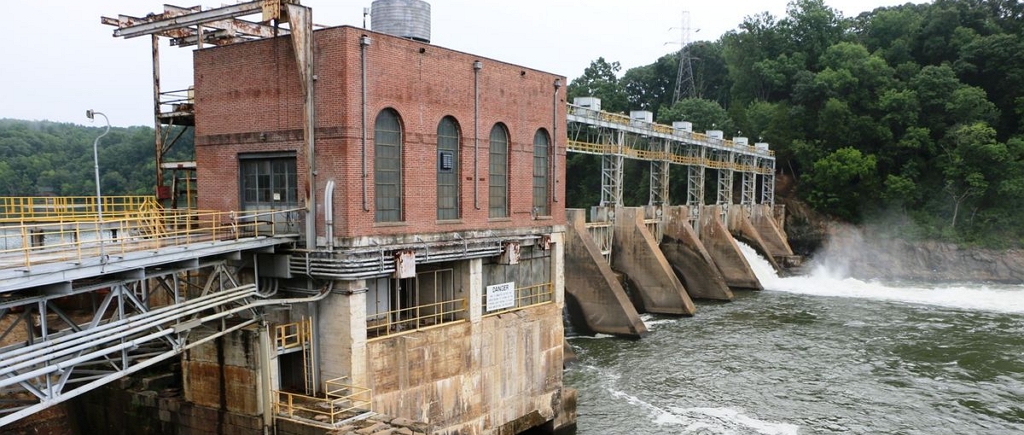Description
Dam failure is a collapse or breach in a dam. In recent years, aging infrastructure and population growth in floodplain areas downstream from dams and near levees have resulted in an increased emphasis on safety, operation, and maintenance of dams. While most dams have storage volumes small enough that failures have little or no repercussions, dams with large storage volumes can cause significant downstream flooding in the event of a breach.
Various types of dams exist to serve a multitude of functions within the CVPDC area. These include farm use, recreation, hydroelectric power generation, flood and storm-water control, water supply and fish or wildlife ponds. In some cases, a single dam structure serves multiple functions, such as generating hydroelectric power and providing recreational opportunities to boaters and fishermen.
Location and Extent
The Virginia Soil and Water Conservation Board has statutory authority to administer the Virginia Dam Safety Program. The Virginia Department of Conservation and Recreation (DCR), Division of Dam Safety and Floodplain Management, aids the Virginia Soil and Water Conservation Board in the administration of the Virginia Dam Safety Program. DCR oversees a dam safety and floodplain management program to ensure that dams are properly and safely designed, built, operated, and maintained. There are a total of 255 dams (impounding structures) located across the CVPDC area, managed by three of the assigned DCR dam safety regions (III, IV and V). 109 of those dams are listed as regulated, 18 are unregulated, and 122 dams in the region are listed as "unknown".
What does the term "unknown/undetermined" mean in hazard potential classification of dams?
According to Virginia DCR, it was the general definition provided: "Based on the workshop training materials we have defined, at this time, the unknown classification (regulated or non-regulated) as "requires study to be performed by dam owner/engineer and submitted, reviewed, and approved (confirmed) by DCR prior to assignment of final hazard potential classification.
History
There are no comprehensive databases of historical dam failures or flooding following a dam failure in the CVPDC area. Most failures occur due to lack of maintenance of dam facilities in combination with major precipitation events, such as hurricanes and thunderstorms.
The 1985 Election Day floods occurred in November 1985, when the James River crested at 42.15ft at Holcomb Rock station; 15 James River gauging stations reported new records. The Appalachian Power Co. hydroelectric plant at Reusens Dam was swamped and facilities like the Griffin Pipe and Lynchburg foundry were damaged. After this disaster, the system of James River dams was improved with tributary “wing dams” and gauges upriver to provide more advance notice of onrushing disaster. Another major event in the CVPDC area took place on June 22 and 23, 1995, when the Timberlake Dam in Campbell County failed. Extremely heavy rainfall over the Timberlake basin caused the dam to fail and resulted in two fatalities. Virginia Tech and local National Weather Service office provided an hydrometeorological assessment of this dam failure and the associated flash flood event in "The Timber Lake Dam failure: A hydrometeorological assessment" report.
Most recently, there was an overtopping and evacuation event associated with College Lake Dam, City of Lynchburg (Inventory No. 680002) in August of 2018. It was a highly publicized event. A localized precipitation event of 4 to 6 inches within the 21 square mile watershed to the dam/lake resulted in water from high lake levels and adjacent road approach drainage to overtop the top of dam crest 12-18 inches deep and the EAP became activated to Stage Two and then Stage Three. Stage Three required evacuation of approximately 125 people in the downstream impact zone. The dam did not fail. Damage from the overtopping event was repaired along with other minor improvements authorized under an emergency authorization for repair activities. Coverage under a current conditional operation and maintenance certificate requires the dam owner to modify, improve, upgrade or remove (decommission) the dam accordingly to comply with Virginia Dam Safety program requirements.
Plan Chapter
CVPDC HMP 2020





